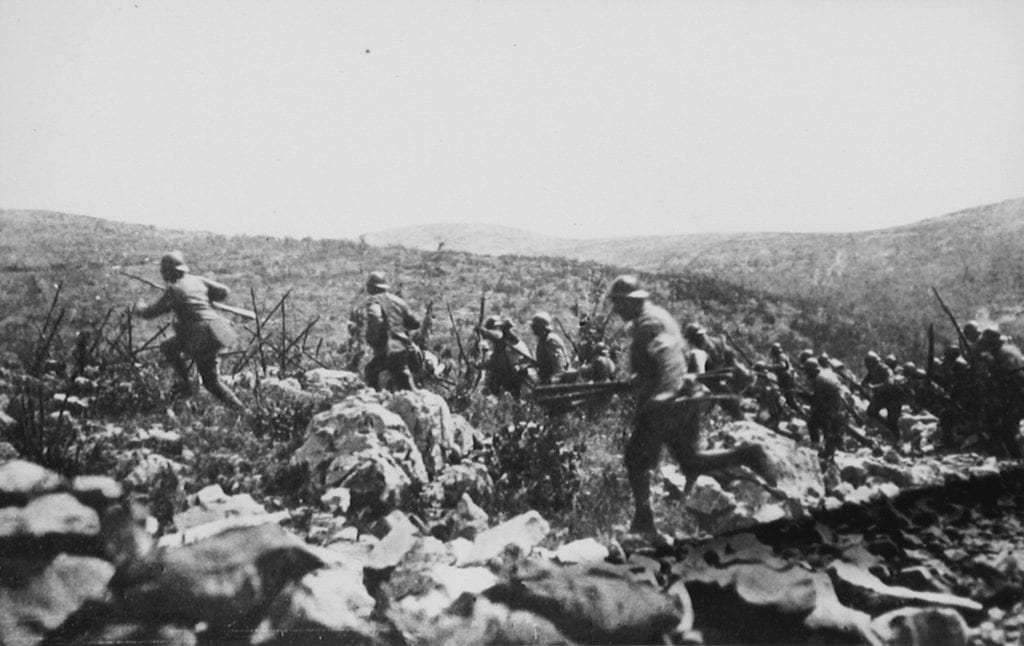
With the rest of the mountainous 400-mile (640 km) length of the Front being almost everywhere dominated by Austro-Hungarian forces, the Soča (Isonzo) was the only practical area for Italian military operations during the war. Italian troops did not reach the port of Trieste, the Italian General Luigi Cadorna's initial target, until after the Armistice. The corridor is also known as the "Ljubljana Gate".īy the autumn of 1915 one mile had been won by Italian troops, and by October 1917 a few Austro-Hungarian mountains and some square miles of land had changed hands several times.

The sixty-mile long Soča River at the time ran entirely inside Austria-Hungary in parallel to the border with Italy, from the Vršič and Predil passes in the Julian Alps to the Adriatic Sea, widening dramatically a few kilometers north of Gorizia, thus opening a narrow corridor between Northern Italy and Central Europe, which goes through the Vipava Valley and the relatively low north-eastern edge of the Karst Plateau to Inner Carniola and Ljubljana. Remains of Kluže, an Austro-Hungarian fortification between Bovec and Log pod Mangrtom

Īs a result, the Austro-Hungarians were forced to move some of their forces from the Eastern Front and a war in the mountains around the Isonzo River began. The area between the northernmost part of the Adriatic Sea and the sources of the Isonzo River thus became the scene of twelve successive battles. Italian commander Luigi Cadorna, a staunch proponent of the frontal assault who claimed the Western Front proved the ineffectiveness of machine guns, initially planned breaking onto the Slovenian plateau, taking Ljubljana and threatening Vienna. In April 1915, in the secret Treaty of London, Italy was promised by the Allies some of the territories of Austro-Hungarian Empire which were mainly inhabited by ethnic Slovenes and Austrian Germans. 3 Primary sector for Italian operations.Cadorna put his sixth offensive on the drawing board after hearing promises of resupply from Italy’s Allies. With the Fifth Battle of the Isonzo over the Italians now had to plan another assault. The battles were fought on the Karst plateau, with the objective of taking Gorizia and the Tolmin bridgehead.Īfter a week of fighting that cost the lives of 4,000 men between both sides, the clashes ceased because of the terrible weather conditions that worsened the trench conditions and because of the Austro-Hungarian “punitive” offensive in the Trentino.Īlong certain parts of the front, especially around Gorizia, skirmishes continued between enemy platoons until March 30 and beyond, in a protracted struggle that produced no clear victor.Ĭadorna had called upon his Russian allies to keep the Austria-Hungarian units at bay on the Eastern front given Cadorna the chance to redeploy his forces at Trentino all the while abandoning the Fifth Battle of the Isonzo. The attacks ordered by Cadorna for the 2nd and 3rd Italian armies as “demonstrations” against the enemy, proved to be less bloody than those previously. The attack was a result of the allied Chantilly Conference of December 1915.

However, it was an offensive launched not after detailed strategic planning, but rather as a distraction to shift the Central Powers away from the Eastern Front and from Verdun, where the greatest bloodshed of the war was occurring. Fifth Battle of the Isonzo (9 – 17 March 1916)Īfter four attempts to cross the Soča (Isonzo) river and invade Austro-Hungarian territory, Luigi Cadorna, the Italian commander-in-chief, organized a strong new offensive following the winter lull in fighting which had allowed the Italian High Command to regroup and organize 8 new divisions for the front.


 0 kommentar(er)
0 kommentar(er)
